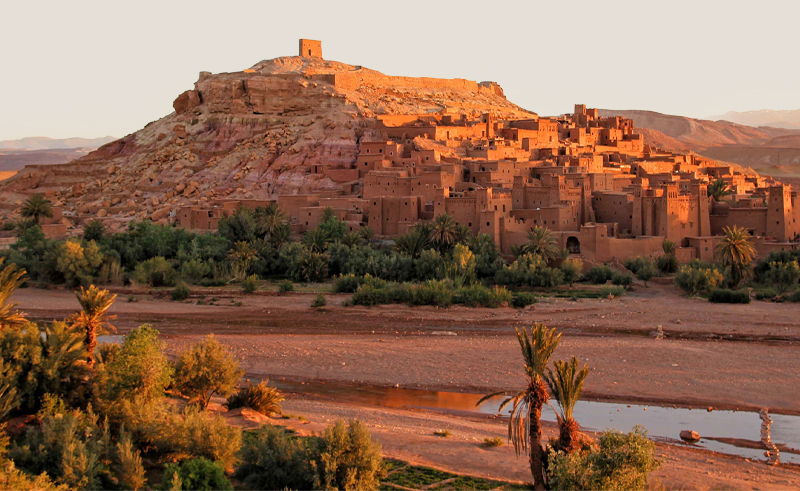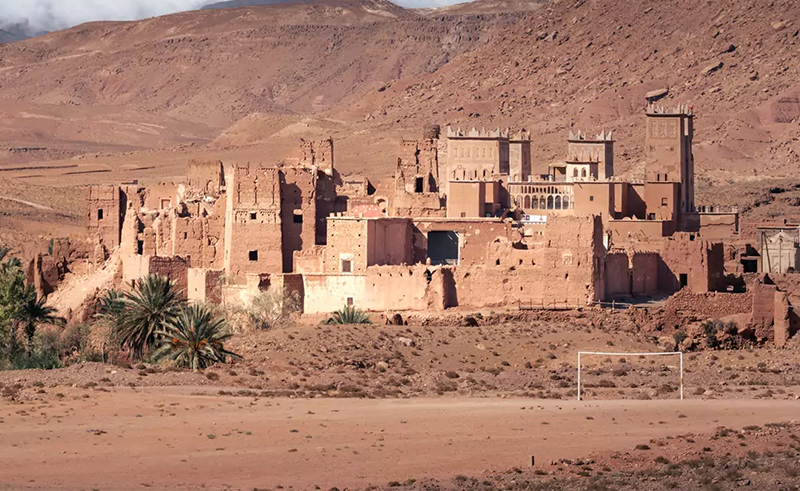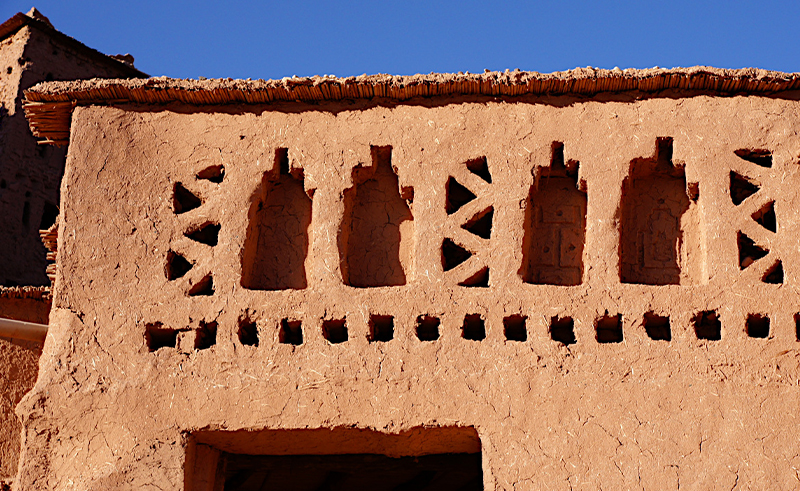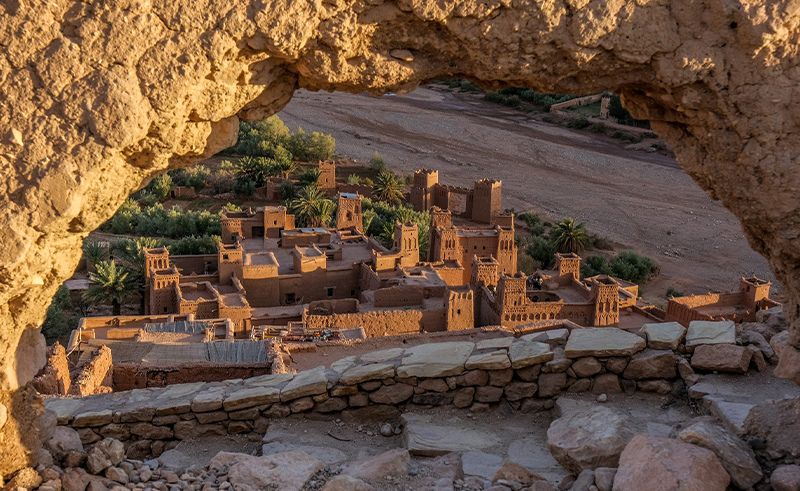For centuries, Morocco’s Aït-Ben-Haddou has been a thriving nexus of commerce, culture, and architectural ingenuity. As a bridge between Marrakech and Timbuktu, it serves as a refuge for traders and a fortress against the desert’s harsh elements. Its sun-baked walls stand as a monument to adaptation and survival, sculpted from the very land it inhabits.
 It is built using rammed earth where a blend of clay, straw, and water is pressed into molds and left to dry under the unrelenting desert sun. It appears to be carved directly from the earth itself, shifting from ochre to deep red as the day progresses. This construction method provides exceptional protection from the searing heat, keeping interiors cool despite the external extremes.
It is built using rammed earth where a blend of clay, straw, and water is pressed into molds and left to dry under the unrelenting desert sun. It appears to be carved directly from the earth itself, shifting from ochre to deep red as the day progresses. This construction method provides exceptional protection from the searing heat, keeping interiors cool despite the external extremes.
 There are a labyrinth of passageways and stairwells that wind through multi-storied mud-brick dwellings. The layout is not the product of formal planning, as it is shaped by the rhythms of daily life and the need for defense against invasions. Narrow alleys channel the wind, cooling the interiors, while thick walls buffer against both heat and cold. The rooftops serve as functional terraces for drying grains and textiles, extending living space beyond the confines of the walls. Carved wooden lintels and geometric motifs etched into the facades are of Berber artisanship influenced by Saharan, Andalusian, and Mediterranean traditions.
There are a labyrinth of passageways and stairwells that wind through multi-storied mud-brick dwellings. The layout is not the product of formal planning, as it is shaped by the rhythms of daily life and the need for defense against invasions. Narrow alleys channel the wind, cooling the interiors, while thick walls buffer against both heat and cold. The rooftops serve as functional terraces for drying grains and textiles, extending living space beyond the confines of the walls. Carved wooden lintels and geometric motifs etched into the facades are of Berber artisanship influenced by Saharan, Andalusian, and Mediterranean traditions.
 As the centuries passed and modern infrastructure redirected economic lifelines, many families relocated to the adjacent village, built with more contemporary materials and better suited to modern conveniences. Despite this, it has endured as a cultural and architectural landmark.
As the centuries passed and modern infrastructure redirected economic lifelines, many families relocated to the adjacent village, built with more contemporary materials and better suited to modern conveniences. Despite this, it has endured as a cultural and architectural landmark.
The very nature of mud-brick construction means that constant renewal is required. Restoration efforts emphasize the importance of using traditional methods—applying fresh layers of clay-based plaster to reinforce structures and prevent erosion. Any deviation from these time-honored techniques risks compromising the authenticity of Aït-Ben-Haddou’s architectural heritage.
 Tourism, which has played a vital role in financing conservation, also presents risks. Its role as a backdrop for the likes of “Gladiator,” “Game of Thrones,” and “Lawrence of Arabia” has drawn crowds from across the world. The very act of visitors treading its pathways accelerates the erosion of its delicate earthen structures.
Tourism, which has played a vital role in financing conservation, also presents risks. Its role as a backdrop for the likes of “Gladiator,” “Game of Thrones,” and “Lawrence of Arabia” has drawn crowds from across the world. The very act of visitors treading its pathways accelerates the erosion of its delicate earthen structures.
 From its highest vantage point, homes packed tightly together, their walls blending into one another as if sculpted from the valley itself. Defensive towers stand at its perimeter and in the courtyards, one can almost hear echoes of the past. Centuries of human resilience, adaptation, and architectural mastery remain inscribed in every sun-dried brick.
From its highest vantage point, homes packed tightly together, their walls blending into one another as if sculpted from the valley itself. Defensive towers stand at its perimeter and in the courtyards, one can almost hear echoes of the past. Centuries of human resilience, adaptation, and architectural mastery remain inscribed in every sun-dried brick.
You can read the original article at cairoscene.com
